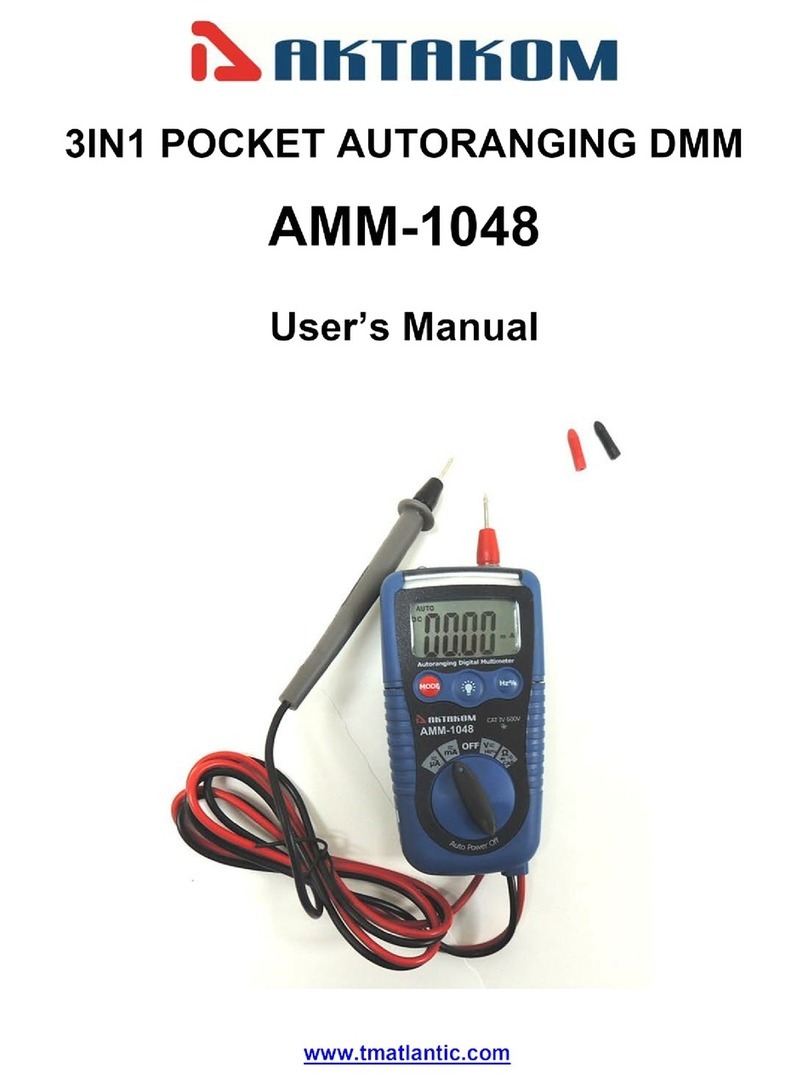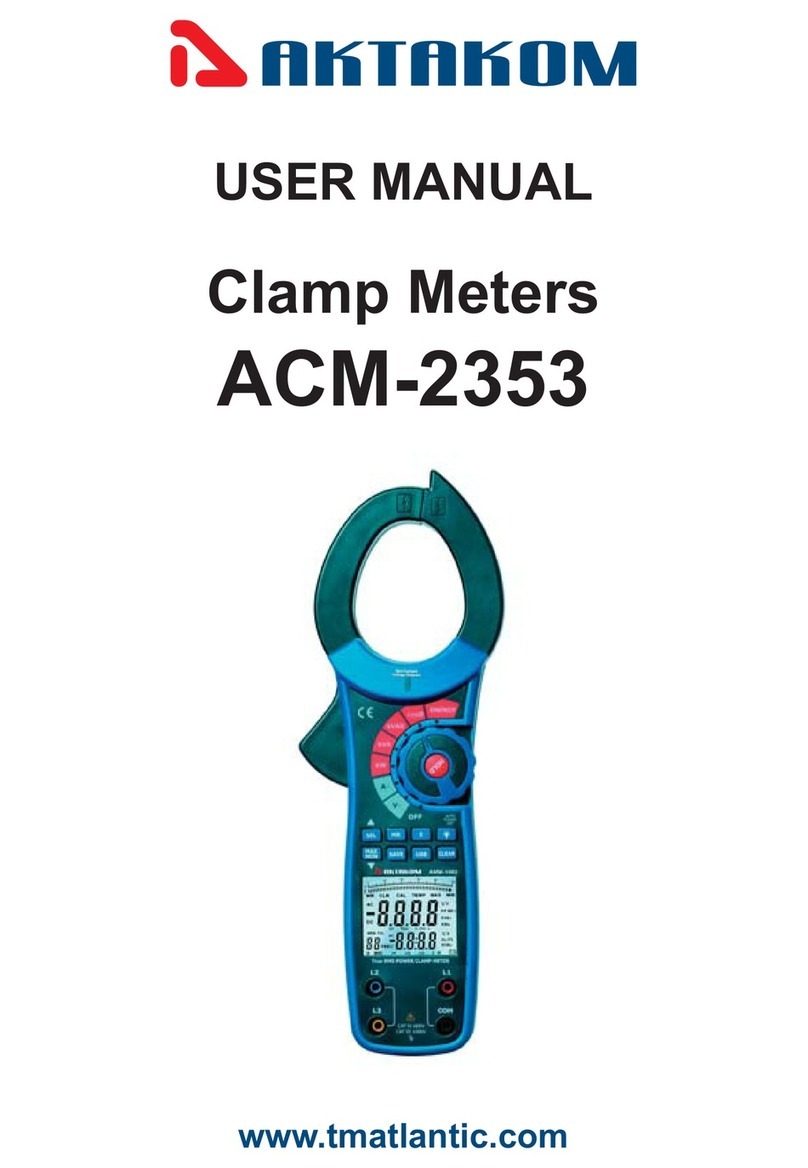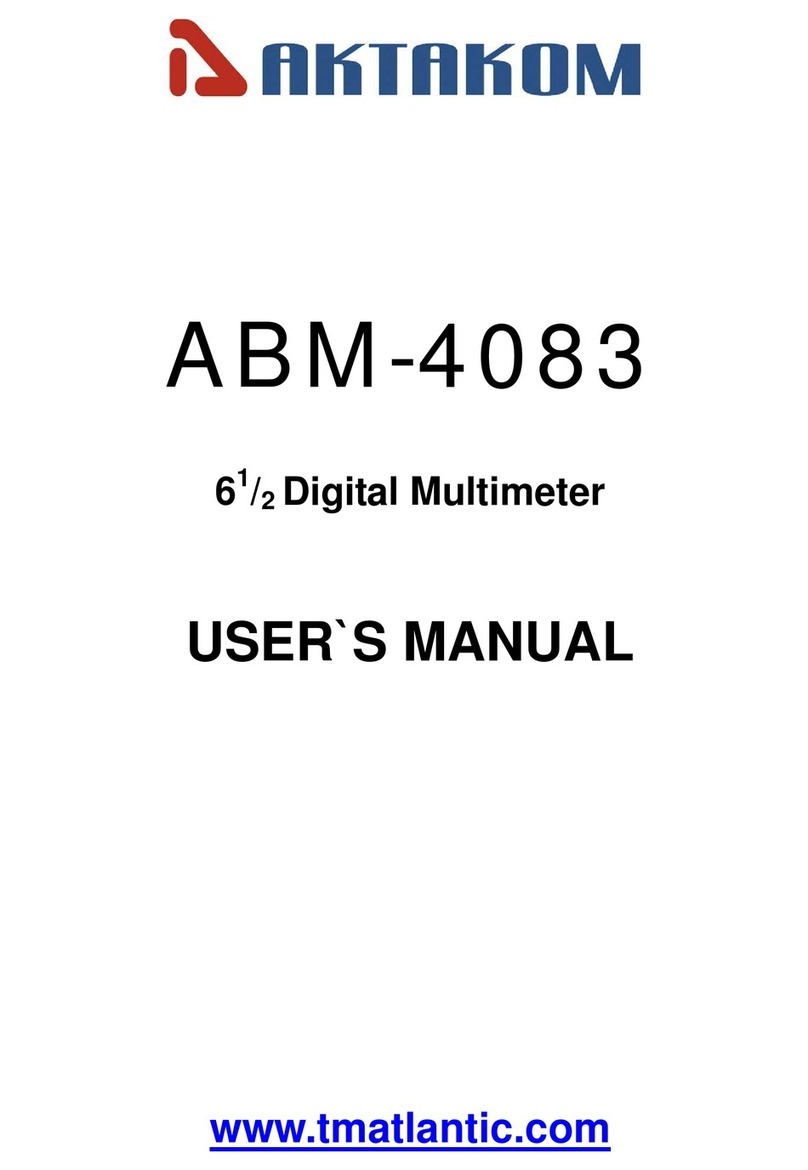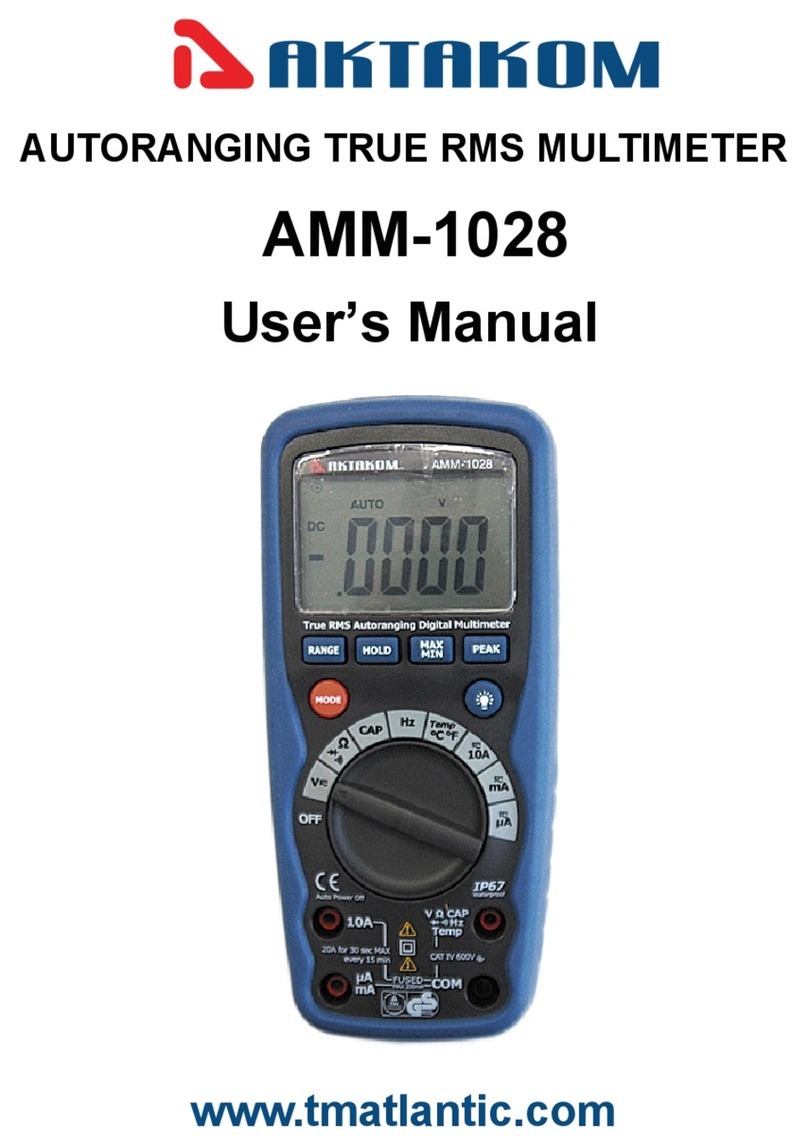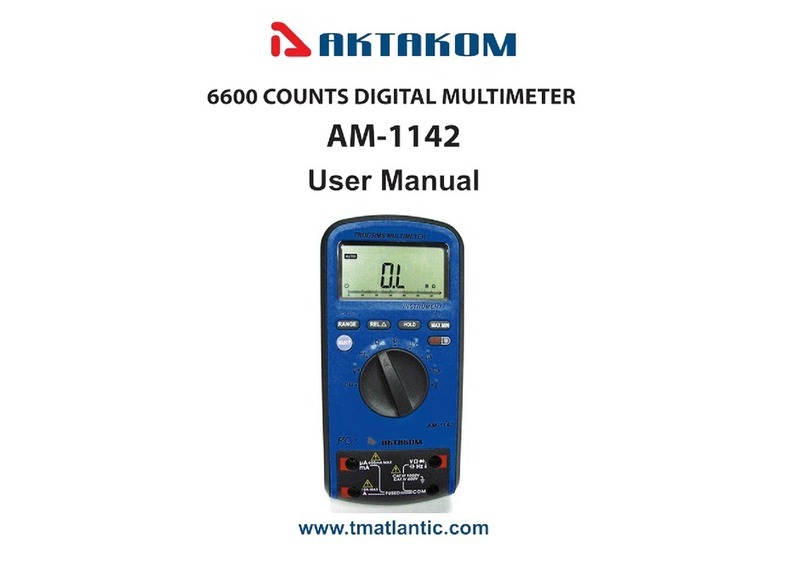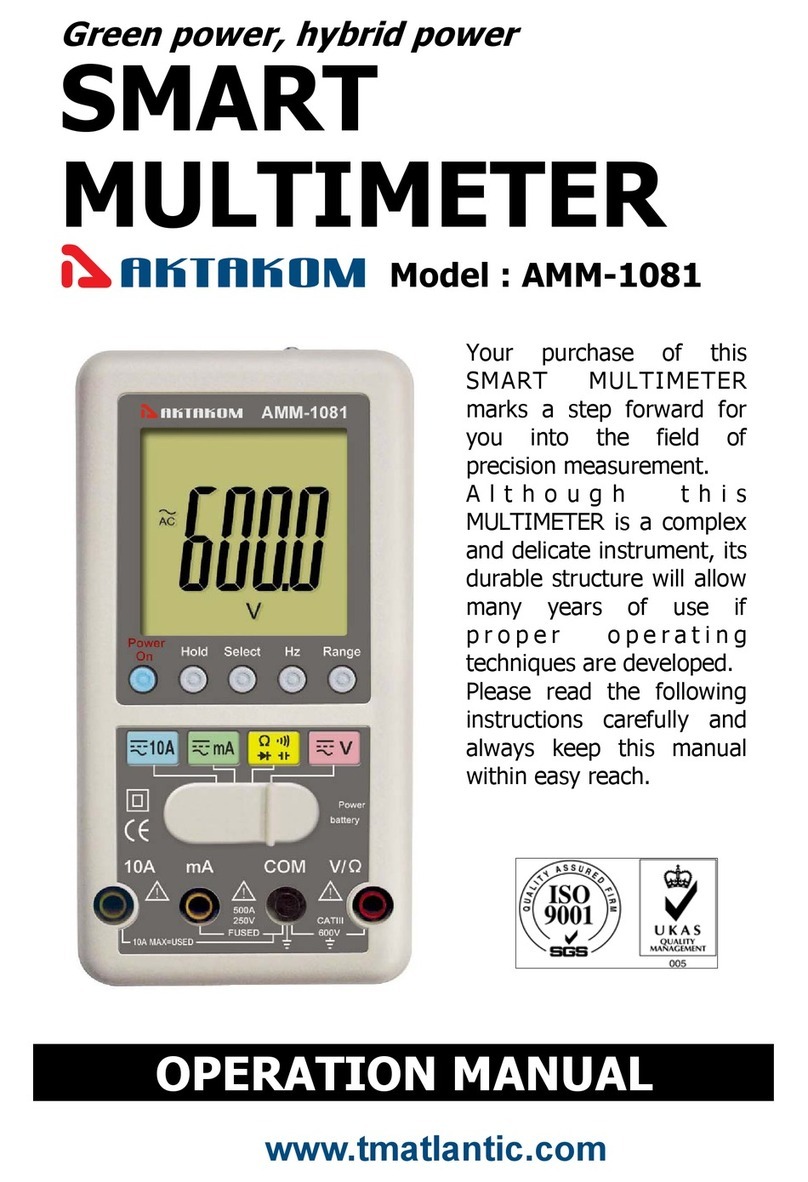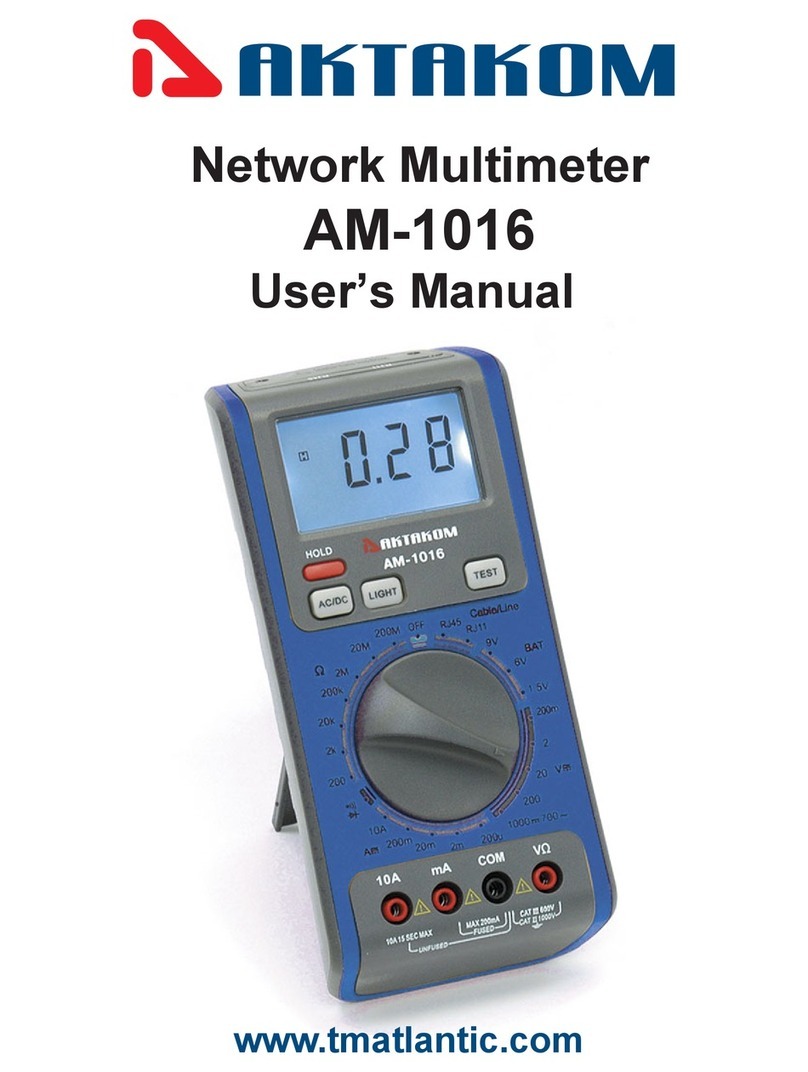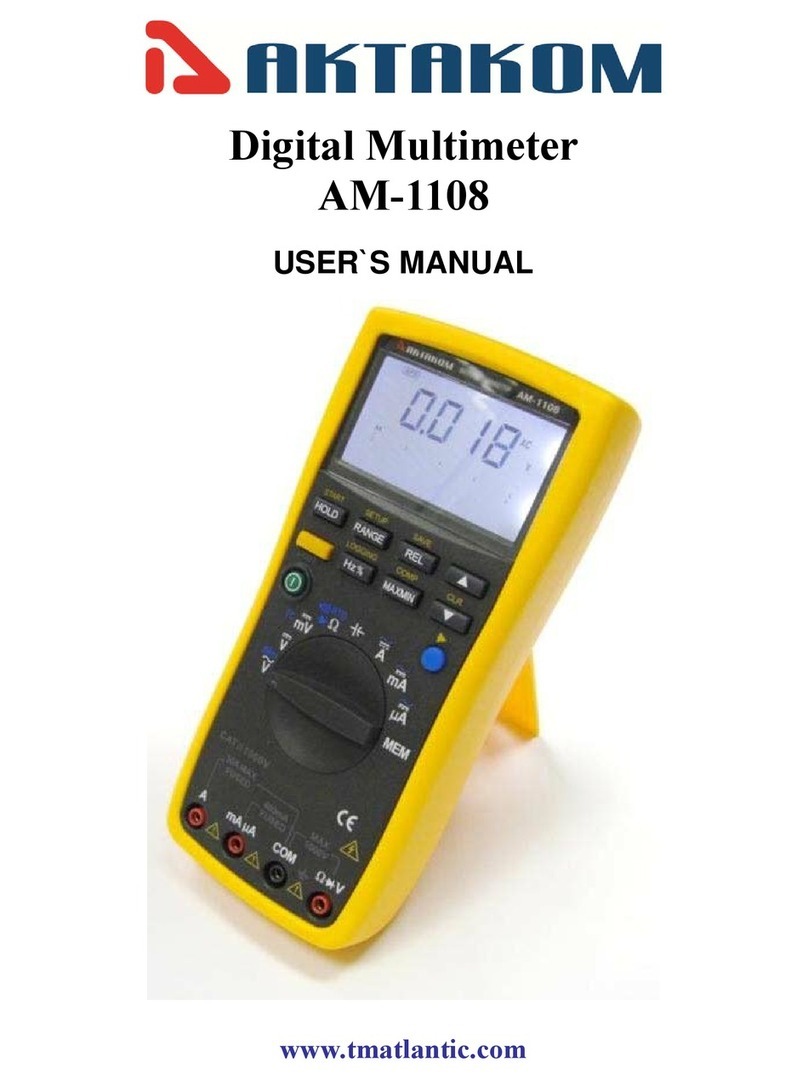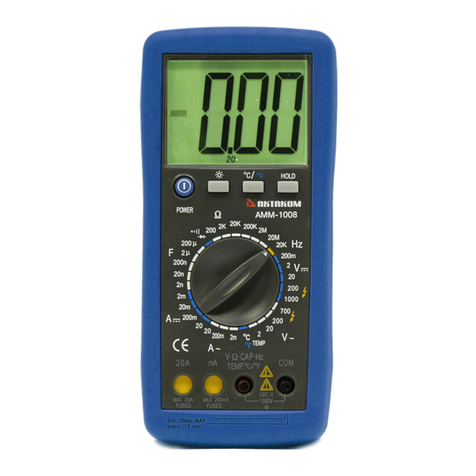
AMM-1022
4
- Full compliance with safety standards can be guaranteed
only if used with test leads supplied. If necessary, they
must be replaced with the same model or same electric
ratings.
1.2 DURING USE
- Before using, you must select the right input jack,
function and range.
- Never exceed the protection limit values indicated in
specifications for each range of measurement.
- When the value scale to be measured is unknown
beforehand, set the range selector at the highest
position.
- Do not measure voltage if the voltage on the terminals
exceeds 1000V above earth ground.
- Always be careful when working with voltages above 60V
DC or 30V AC rms, keep fingers behind the probe
barriers while measuring.
- Before rotating the transform switch to change functions
and ranges, disconnect test leads from the circuit under
test.
- Never perform resistance, temperature, transistor, diode
and continuity measurements on live circuits.
- Never use the meter under the condition of the explosive
air, steam or dirt.
- If any faults or abnormalities are observed, the meter can
not be used any more and it has to be checked out.
- Never use the meter unless the rear case is in place and
fastened fully.
- Please do not store or use meter in areas exposed to direct
sunlight, high temperature, humidity or condensation.
